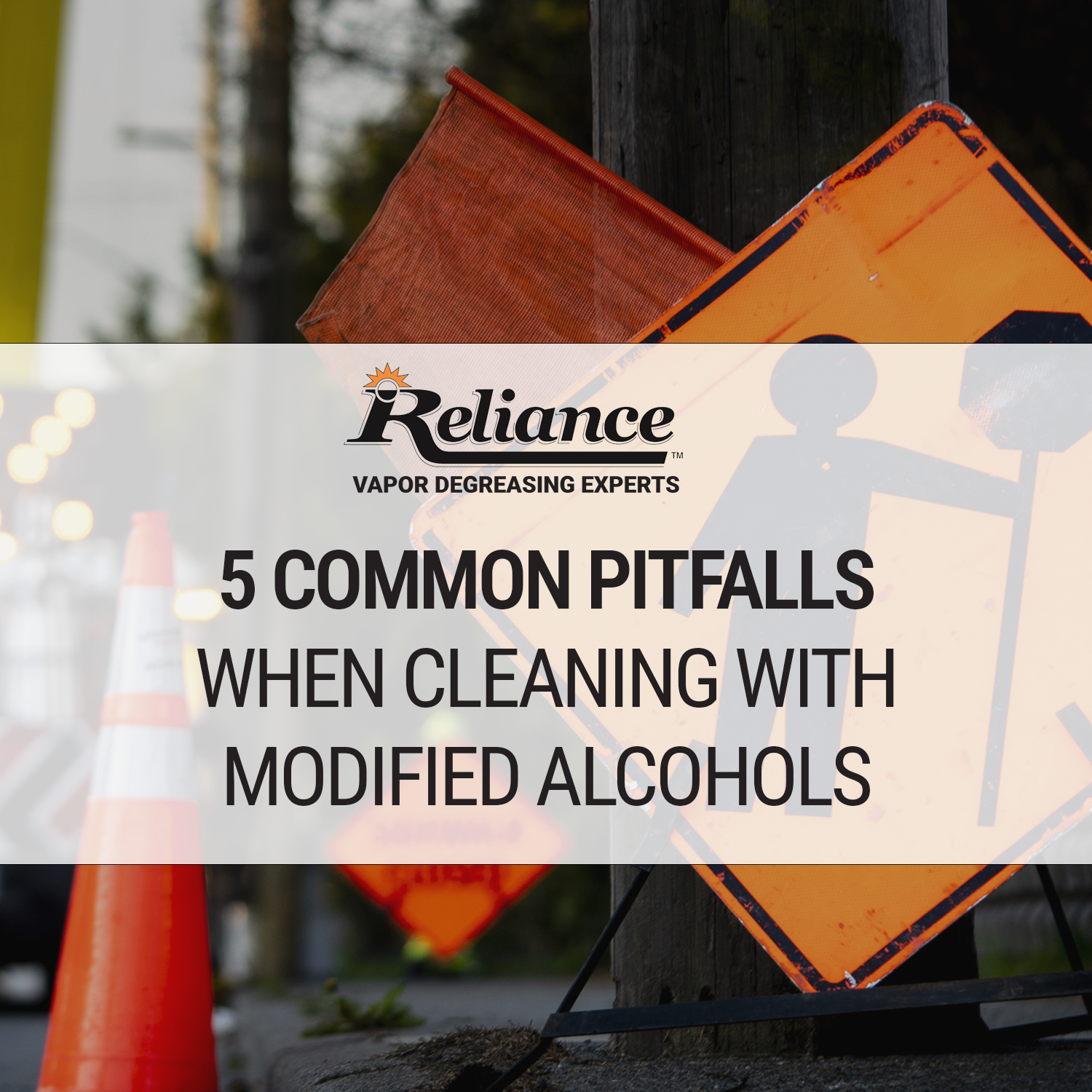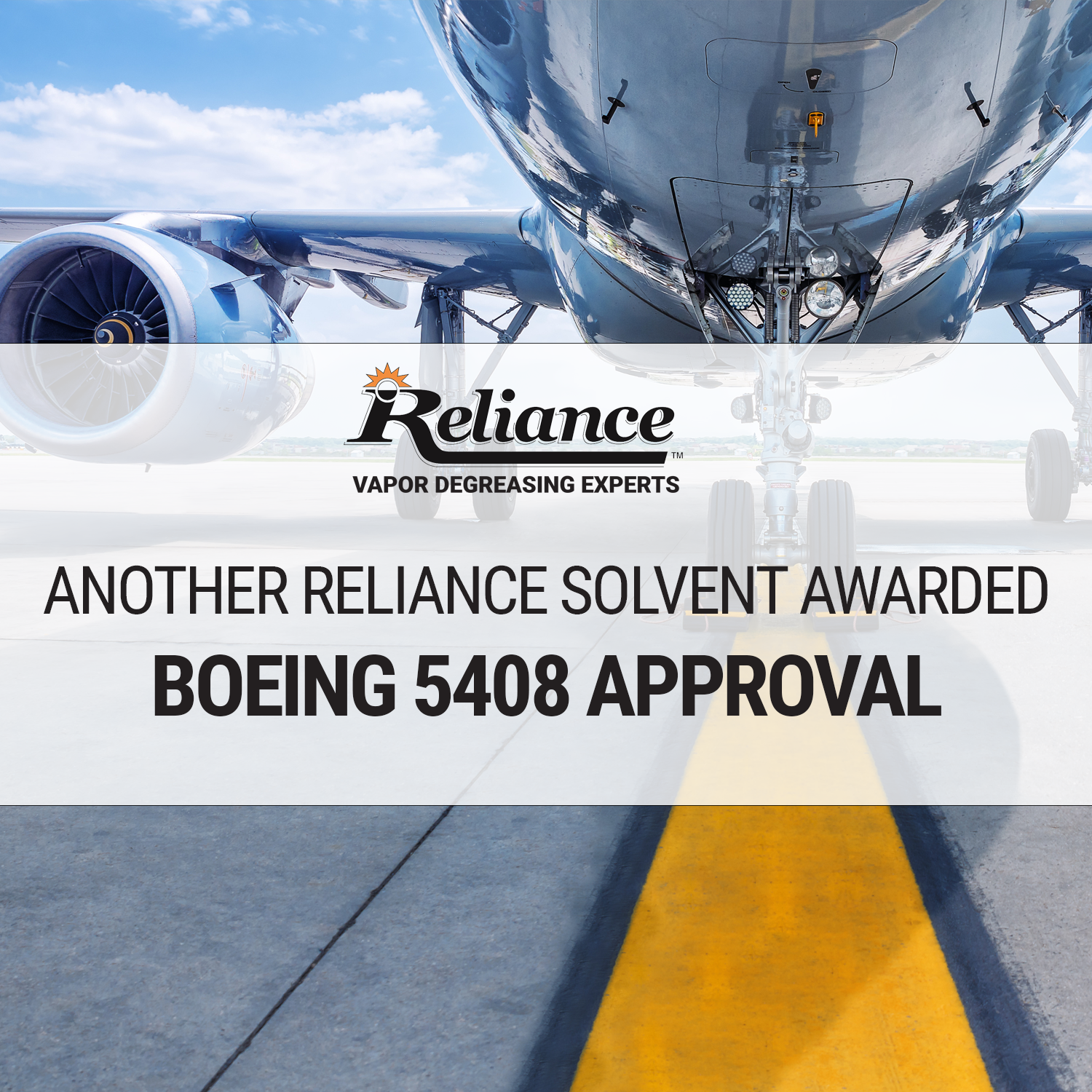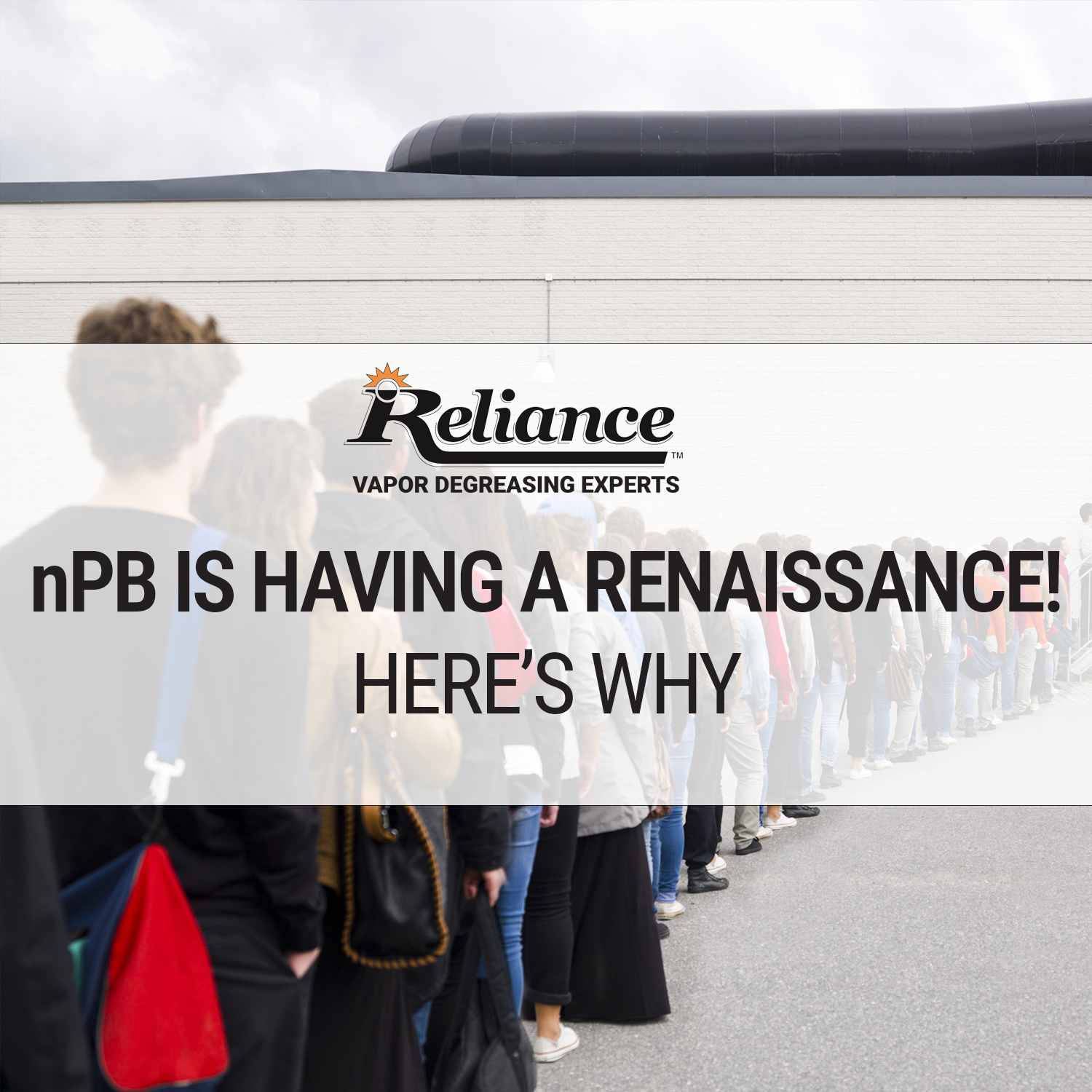
VAPOR DEGREASING NEWS
If you’re considering cleaning with modified alcohols—especially for vapor degreasing—please do your due diligence
If you are considering using Modified Alcohols for your cleaning process in a Vacuum System…please read!
12 Benefits of Modern Open-Top Vapor Degreasers Compared to Vacuum Vapor Degreasers
Comparing Vacuum Vapor Degreasers with Open-Top Vapor Degreasing Systems
Big News: More Reliance Solvents Awarded Boeing 5408 Approvals
5408 Approved! More Reliance Solvents are now approved under BAC 5408 for vapor degreasing: AeroTron-AV-5408 - Fluorinated (Non-PFAS) Material & AeroTron-GS-5408 - Fluorinated (Non-PFAS) Material. These join our EnTron-Aero Brominated solvent which has been 5408 approved since 2011.
Reliance nPB (1-BP) is having a renaissance! Here’s Why
nPB (n Propyl Bromide) is having a renaissance.
Plan now for Trichloroethylene (TCE) ban
The USEPA has made a final regulatory ruling regarding the use of trichloroethylene (TCE) for commercial use. However at this point, there is a temporary administrative stay on the effective date - pending further order of the court; therefore, the final rule has yet to go into effect. However, finding an alternative to TCE is still necessary to be ready for when the rule does go into effect.
Floor Placement of a Vapor Degreaser in your Facility
Proper placement of your vapor degreaser
Cleaner, Faster, Smarter Metal Part Cleaning
Vapor degreasing has been around for decades but many companies still do not use it because they do not know about it! And many do not realize it will upgrade their part cleaning operation significantly. In this blog we will discuss 3 key features of vapor degreasing: Cleaner parts; faster processing times; overall smarter process that enhances your parts cleaning easily.
7 Questions When Switching Vapor Degreasing Solvents
Frequently asked questions when switching solvents in your vapor degreaser.
Novec Supplies Are Dwindling…AeroTron-100 is a direct replacement - available now!
Novec is being discontinued in 2025 - and supplies are dwindling. Now is the time to find an alternative. AeroTron-100 is an excellent drop in replacement for many of the Novec fluids…including 72DA, 72DE, 73DA, 73DE and 7100…read more.
Comparing Ultrasonic Vapor Degreasing to Basic Ultrasonic Cleaning Tanks
All ultrasonic cleaning is not the same – and when it comes to part cleanliness, overall operational costs and worker safety, ultrasonic vapor degreasing vs. basic ultrasonic tank utilization – ultrasonic vapor degreasing wins hands down. In this blog we will review the advantages and disadvantages of using an ultrasonic vapor degreaser system versus a basic ultrasonic immersion tank.
Your Vapor Degreaser needs to be NESHAP Compliant if Using nPB
NESHAP stands for National Emission Standards for Hazardous Air Pollutants (NESHAP) and are standards set by the EPA for hazardous air pollutants. These emission standards are the legal requirements governing air pollutants that are released into the atmosphere…
What’s going on with nPB (1-BP)? Change Your Solvent Not Your Whole Operation!
Given the USEPA is proposing a final regulatory ruling regarding the use of nPB (n-Propyl Bromide) also known as 1-bromopropane (1-BP), a question you might be asking right now if you are using nPB is “do I have to stop using nPB? and if so when?"
Industrial Parts Washing: Cleaning Machined Metal Parts
Industrial parts washers and metal fabrication go hand-in-hand to ensure production quality. Effective part cleaning of metal components after machining is crucial. By removing contaminants and residues from parts before and/or after machining, parts washers help enhance the quality of the machined parts.
What is the impact of the EPA Methylene Chloride rule on vapor degreasing?
In April of 2024, the EPA issued a final rule regulating methylene chloride. This means anyone who manufactures, process and distributes methylene chloride may be impacted by the EPA’s regulation of the chemical.
Most commercial uses are prohibited after April 28, 2026 – this includes anyone doing vapor degreasing with methylene chloride or incorporating the Methylene Chloride into formulations, mixtures or reaction products.
Is Vapor Degreasing Right For You?
Part cleaning is an essential step of any manufacturing process. Ensuring part cleanliness requirements are met is important…and one of the superpowers of vapor degreasing. Read about 6 key benefits of vapor degreasing and explore if vapor degreasing would enhance your part cleaning operation.
Safety Vapor Limit Control & Indicator (SVC) – What is it and why is it important?
Understanding the safety vapor control is an important because it lets you know if solvent is properly contained in the vapor degreaser or not. It is your first line of defense in knowing that your unit is operating correctly.
8 Daily Vapor Degreaser Maintenance Checks
8 Daily Maintenance Checks Before Processing Parts in Your Vapor Degreaser will ensure parts are cleaned properly every day.
How do I know what vapor degreasing solvent to use? 11 considerations for choosing a solvent
How do I know what vapor degreasing solvent to use? Good question, read more about 11 considerations for choosing a solvent.




















